PBOC Easing To Continue In 2012
By Win Thin
With the Chinese New Year holiday period approaching, it becomes a bit harder to discern PBOC’s policy intentions. It typically adds liquidity aggressively ahead of the holidays, but this year it comes at a time when the central bank is embarking on what we see as a protracted easing cycle. PBOC suspended its bill sales ahead of the New Year in order to keep cash in the system, and so money market rates have fallen significantly. Suffice to say, whatever noise is seen in the money markets ahead of the holiday week of January 23, the PBOC will continue easing this year via a combination of reserve requirement and policy rate cuts.
This last PBOC tightening cycle started in January 2010 with a 50 bp hike in reserve requirements that was followed by the first 25 bp hike in policy rates October 2010. All told, reserve requirements were hiked 600 bp to 21.5% while policy rates were hiked 125 bp (1-year lending rate went from 5.31% to 6.56%. PBOC started this current easing cycle with a 50 bp cut in reserve requirements in December, and will surely follow this up with more cuts. Whether it’s before or after the New Year holiday is pure guesswork. Money and loan growth have slowed recently, but we expect it to be reversed in the coming months.
Indeed, one of the key factors to monitor in China next year will be bank lending, as a proxy for the overall policy stance. The official policy stance is of “fine-tuning”, de-emphasizing inflation, but we think this categorization is an understatement and policy-makers will err on the side of more easing. For example, of China’s four big banks, only the Agricultural Bank of China reached its target lending (CNY 600 bln) last year. Lending came below target for the other three, ICBC (CNY 818 bln actual vs. CNY 820 bln target), China Construction Bank (CNY 727 bln vs. CNY 750 bln target), and Bank of China (CNY507 bln vs. CNY600 bln target). While an undershoot of lending quotas is unlikely in 2012, the big four banks will not be “partying like its 2008.”
CPI inflation has eased to 4.2% y/y in November from the peak 6.5% y/y in July 2011. December data is scheduled for January 12, with consensus at 4.0% y/y. PPI will be reported then too and is expected to fall to 1.6% y/y from 2.7% y/y in November, and this sets the stage for continued PBOC easing. PMI readings, both official and third party, are hovering near the 50 boom-bust level, suggesting a tepid manufacturing performance in the coming months. Fiscal stimulus will likely pick up this year, though China starts from a weaker fiscal position now (2011 deficit is estimated at almost -2% of GDP) than it did in 2007 (when it ran a 1% of GDP surplus). According to a report by the Shanghai Securities News service, China’s 2012 fiscal revenue is expected to rise about 12% compared with 2011 to CNY11.6 trln and fiscal spending may increase about 14.3% to CNY12.4 trln.
Source: Bloomberg
Overall, our base case remains for a soft landing, though given the nature of Chinese economic data, this is a loaded concept. IMF sees China growing 9% in 2012 vs. 9.5% in 2011. Looking ahead, Q4 11 GDP growth is seen slowing to 8.6% y/y from 9.1% y/y when it is reported January 17. We think that policy-makers will be able to maintain a growth rate this year that will satisfy markets and support a manageable slowdown in the Asian region. However, it won’t be easy since China, like the rest of the world, is simply in a much weaker state compared to the start of this multi-year crisis and will not be able to reproduce that magnitude of stimulus again.
Source: Bloomberg
After sideways trading in CNY for most of Q4, PBOC really turned it on in late December and let USD/CNY fall pretty sharply. CNY ended up 1.4% vs. USD in Q4 11, the largest gain since Q2 08. For all of 2011, CNY gained 4.7% vs. USD. 12-month CNY NDFs are pricing in -0.6% depreciation, and while there is a risk that appreciation will slow in 2012 from the 2011 pace, we do not see outright depreciation. A new variable the PBOC will have to contend with is the backflow of offshore yuan in Hong Kong into mainland equity markets via the RQFII program. The quota for the first program was set at CNY10.7 bln ($1.7 bln) and some reports suggest a second quota worth CNY8.2 bln ($1.3 bln) has already been approved. Regulations and limits will likely be adjusted as needed until the authorities find the right mix and magnitude of capital flows, but at the margin, this could be another positive factor supporting the battered mainland equity markets, along with PBOC easing. China equities were amongst the worst performers in EM last year.
Source: Bloomberg
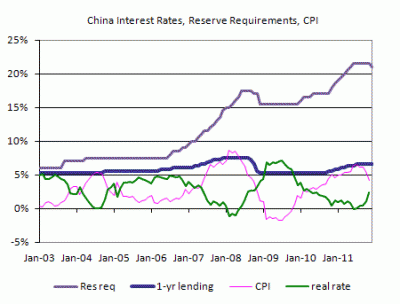
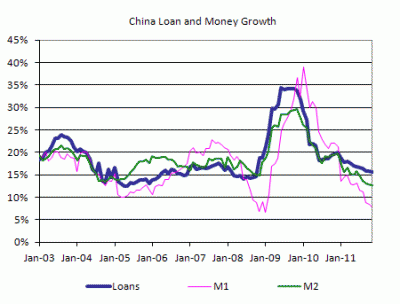
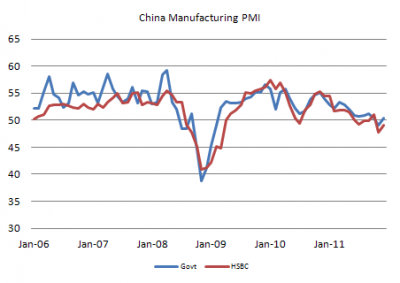
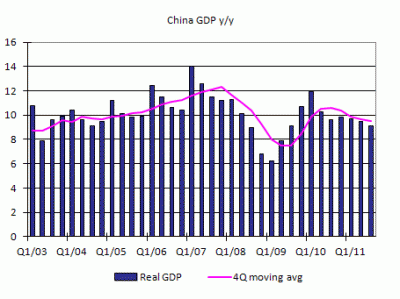
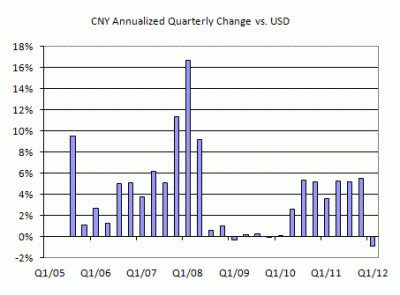
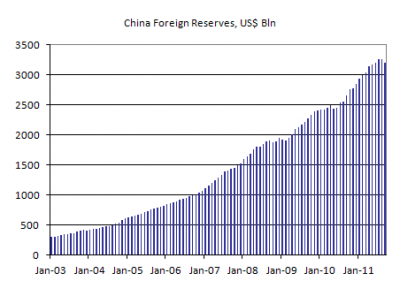
Comments are closed.